Rosana Lisa Oliva, who oversees the new brand and the research and development which will eventually filter down to the rest of Ramón Bilbao’s portfolio, describes the new winery as “a university”.
The new Finca Valhonta and Ladero reds – the producer’s most expensive wines at €50-100 each – are impressive. But it’s the research that’s gone into every aspect of the production that is most impressive.
The debut range of two reds and a rosé are made from three small, high-altitude plots – Valhonta in Villalba de Rioja, and Ladero and Lalinde in the foothills of the Sierra de Yerga in Rioja Oriental – where their research shows the grapes are subject to increased ultraviolet rays, increasing the thickness of the grapes’ skins and boosting the grapes’ colour, anthocyanin levels and tannins. But they have also found that the effects of the UV rays can be modified by spraying biofilters:
- A natural compound found in algae, known to act as a highly efficient sunscreen, produced less colour intensity;
- Uric acid, a compound which prevents burning in birds’ eyes, produced 40% more polyphenols and a higher concentration of malic acid;
- Ascorbic acid (vitamin C) produced 50% more colour.
22mm is better than 27, Rosana said, and fine or medium grain is better than extra-fine “to give less concentration of tannins that add astringency and dry character”.
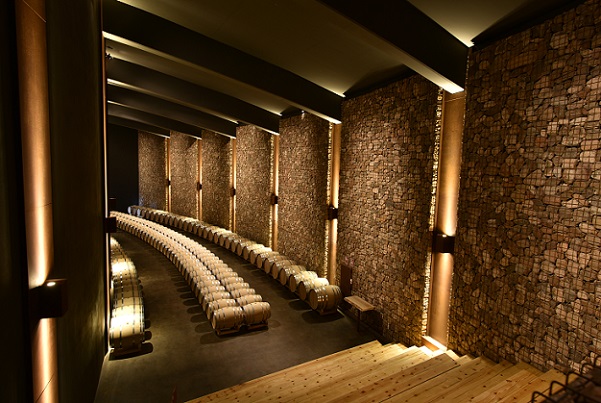
For the new range – which has been described as “Ramon Bilboa’s terroir collection” – American oak has been eschewed in favour of French and Hungarian oak. Rosana explained: “We found the American oak left a sweeter, oaky flavour whereas the other oaks were more respectful of the fruity character of the vineyards.”
Research was also conducted to find “the best barrel for each vineyard”. “French,” they found, “gives more power; Hungarian gives more complexity”.
The Tempranillo, Finca Valhonta 2017, with its lower tannins, was aged in 500L French oak (30% new, 70% second fill) for 14 months while the Tempranillo-Garnacha blend, Finca Ladero 2016, was aged in 225L second-use French oak and new Hungarian oak casks for 16 months.
Huesca-born Rosana, who made wine in Roda, Calatayud, Cariñena and Navarra before becoming Rodolfo Bastida’s “right hand” at Ramón Bilbao, has also researched toasting levels, and the origin of the barrels.
She told Canopy some of her conclusions:
- “Light toast gives fresher character to the wines. But it is important as well the combination with the thickness of staves, the selection of the grain, and the way that the barrel is shaped (by fire or steam).”
- “We are measuring the level of dissolved oxygen in French and Hungarian oak, to see the differences according to the growing conditions. We have a spot in the centre of the barrel and a second one close to the bung. In Hungary, the terroir is more extreme, pure continental climate, and trees grow so slowly, and grain is extra-fine. At this step of ageing (9 months), the evolution is quicker in French oak, but we need to finish the study.”
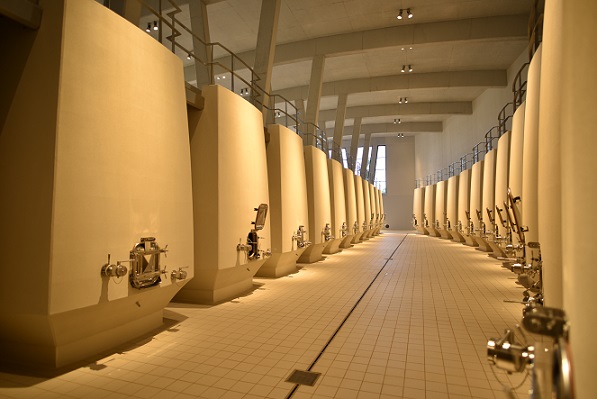
The two recently released, ready-to-drink reds were also aged in concrete vats (for 8 months in the case of Finca Valhonta, 22 months for Finca Ladero), “to stabilise the colour without adding flavours”. Lalomba’s studies show that their unlined cement tanks are 50% less porous than the barrels they use. “Here we are rounding out the palate, we are fining the tannings, we are working the volume and the texture in the palate,” Rosana said. “Here, as well, we are getting more drinkability to the red wines.”
Rosana added: “We are very happy with the concrete… The concrete vats help us to keep all the richness, all the complexity that comes from the selected vineyards.”
The new winery, adjacent to the Ramón Bilbao winery in Haro, Rioja, has 48 bespoke cement tanks (above), which vary in capacity from 4,000 to 10,000 tonnes of grapes. Made in Italy, they consist of two layers of unlined concrete sandwiching a layer of water for temperature control.
'We’ve done a lot of research into concrete'Project manager Alberto Saldon said: “We’ve done a lot of research into concrete and it seems to fall between stainless steel and oak, as it doesn’t impart any aromas into the wine, like steel, but it is a porous material, like oak… The purity of fruit you get from them is amazing. The second ageing in concrete leads to more balanced wines with finer tannins that are approachable at a younger age.”
The major downside is the difficulty in cleaning them. “We can’t apply hot temperature because the concrete breaks,” Rosana said.
Another example of the extensive research behind the wines concerns light reflection in the high-altitude vineyards. For this they used white and black stones under the vines to help boost the grapes’ ripening process by reflecting, and soaking up heat from, the sunlight. “One of the treatments increased the grapes’ colour intensity, and another led to a definite improvement in the acidity of the fruit,” Rosana said.
The wines
Rioja born-and-bred Rodolfo Bastida, technical director and general manager of Ramón Bilbao, said they have selected seven vineyards from their 205ha for this project and have been studying them for ten years. These are single plots they know well that always produce wines with “high personality”.Alberto described them as vineyards with “a real distinction”, adding: “I don’t say the best one – because we are not using the oldest one, we are not using the most beautiful, we are using the ones that have a unique personality.”
He expects the current range of three wines from three sites to grow. Speaking at the online launch event, he said: “It’s a small step for us but maybe, who knows, we are in the first step to a legendary brand in Rioja.”
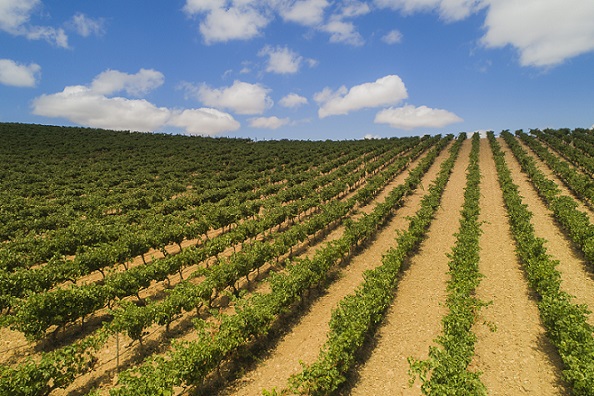
The two reds in the new single-vineyard collection, Lalomba Finca Valhonta 2017 and Lalomba Finca Ladero 2016, are made in an almost identical fashion:
- Optical scanner to select the best berries;
- Maceration in cool concrete vats (starting at 6°C, rising to 12°C) – over three days in the case of Finca Valhonta, five days for Finca Ladero;
- Fermentation in concrete vats, started slowly with native yeasts – at 25°C for Finca Valhonta, at 24°C for Finca Ladero;
- Inoculated with selected indigenous yeasts after several days – four days in the case of Finca Valhonta, five days for Finca Ladero;
- Delestage and pump-overs to aid extraction and maceration;
- Extended maceration after fermentation – for a further 12 days in the case of Finca Valhonta, 14 days for Finca Ladero;
- After gentle pressing, the wine goes to oak barrels – 500L French oak (30% new, 70% second fill) in the case of Finca Valhonta, 225L second-use French oak and new Hungarian oak casks for Finca Ladero – for natural malolactic conversion and ageing (14 months in the case of Finca Valhonta, 16 months for Finca Ladero);
- Racked to concrete vats for “final rounding off” – for a further 8 months in the case of Finca Valhonta, 22 months for Finca Ladero.
- After ageing, the wines are bottled without filtration, but with 90mg/L total sulphur – 31mg/L free in the case of Finca Valhonta, 33mg/L free for Finca Ladero.
Rosana expanded: “We taste the wine every month.”
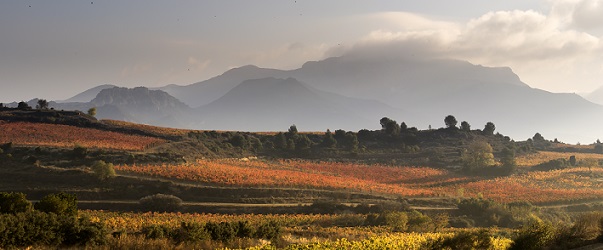
Apart from the timings, the only major difference in the making of the two wines comes at harvest time. The 2.8ha Finca Valhonta vineyard (above) is closer to the winery, on the southern slope of Sierra Cantabria, so the Tempranillo grapes are transported in 250kg crates. The 6ha Finca Ladero vineyard – part of the company’s 90ha estate on Mount Yerga, one of the prized sites in Rioja Oriental – is about 100km away, so the 80% Tempranillo, 20% Garnacha grapes (from the top of the hill) are picked into 12kg crates and stored for 12 hours in a cooler.
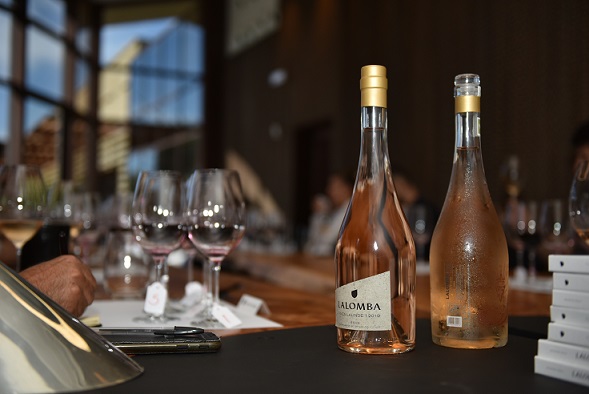
The premium rosé
The first wine in the range to be launched was the premium rosé, Finca Lalinde Rosado. Now in its fifth vintage, the pale-peach-coloured rosé is made from 90% Garnacha and 10% Viura, growing on a “super-windy site” – 5.4ha at an altitude of 520m on the austere slopes of the Sierra de Yerga mountains.The fruit is hand-picked into 12kg boxes and transported to the winery in a refrigerated truck. After sorting and pressing in 90-minute cycles, the must from the soft first pressing undergoes three days’ maceration at 3-4°C. The fermentation in concrete vats starts at 17°C to enhance the aromas and is reduced to 14°C to reduce the stress on the yeast and bring out the primary fruit flavours. The Viura is used to control the colour.
The wine is aged in concrete on fine lees for five months “to work the mouthfeel, the volume and the sensation on the palate”, according to Rosana.
In the pipeline is a fourth wine, from Finca Aguilones (below), a 23ha property stretching across a meander of the Ebro river in San Asensio.
The Lalomba project is definitely one to watch. Stunning vineyards, winery and wines.
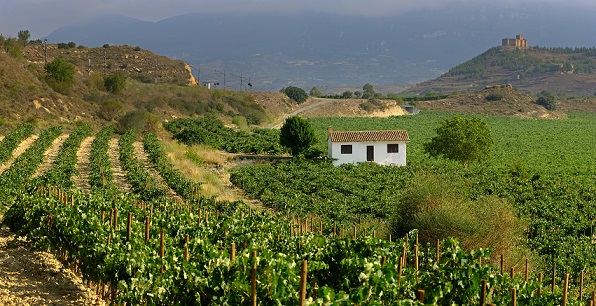


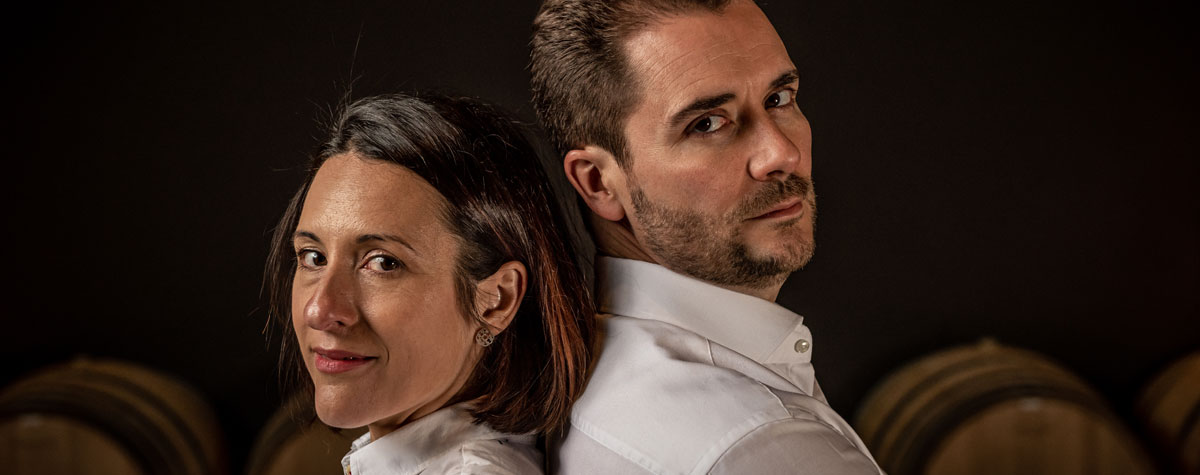










.png)






